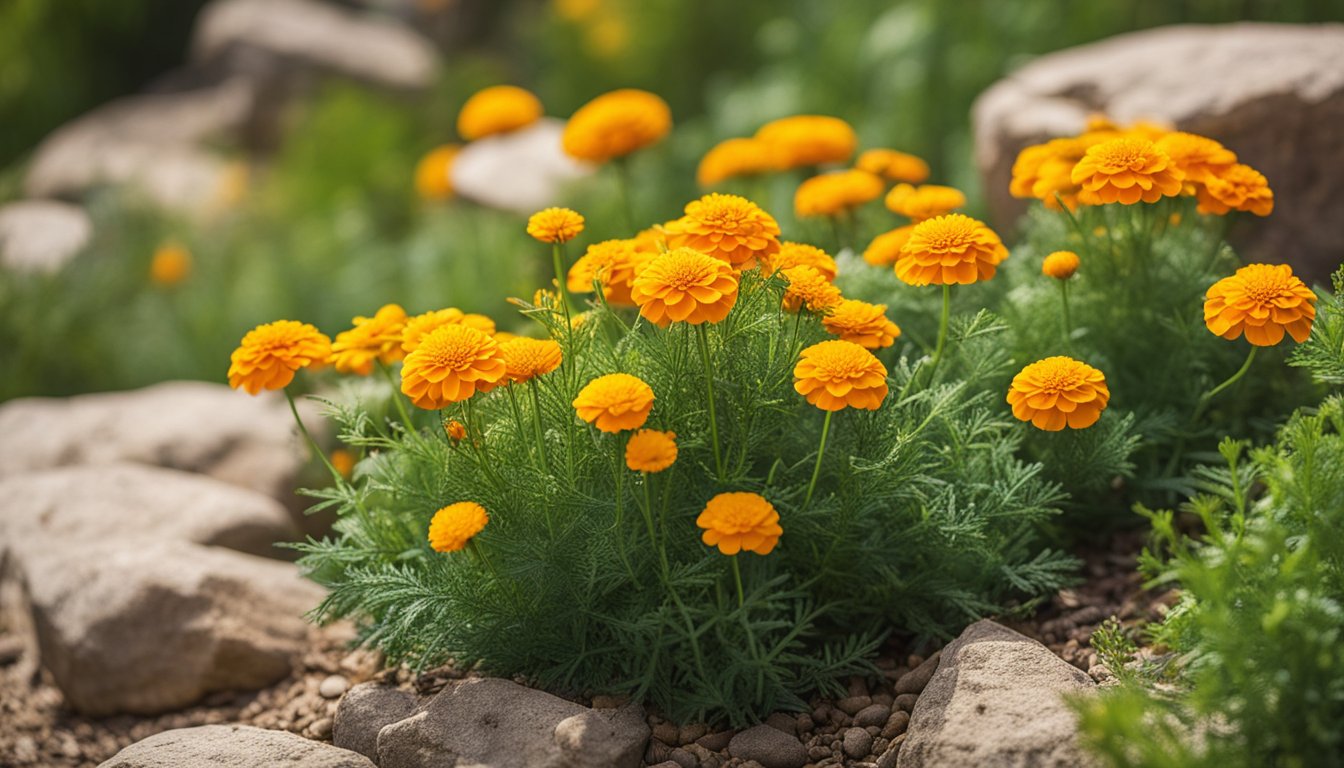If you’ve ever felt uneasy about snakes invading your yard, you’re not alone. The thought of these slithering creatures can send shivers down anyone’s spine. But what if I told you there’s a natural way to keep them at bay? Enter snake-repellent plants, nature’s very own defence system against unwanted visitors.
These plants not only add beauty to your garden but also serve a practical purpose. With the right selection, you can create a lush landscape that deters snakes while enhancing your outdoor space. So let’s explore how these remarkable plants can help you reclaim your peace of mind and enjoy your garden without fear.
Overview of Snake Repellent Plants
Snake-repellent plants provide both beauty and functionality. Certain plants emit scents or contain chemicals that snakes find unpleasant. This can create a less inviting environment in gardens and yards.
Lemon balm tops the list for its strong citrus aroma. I often notice that this plant not only brightens my garden but also keeps snakes at bay. Marigolds are another great option. Their distinctive smell seems to deter various pests, including snakes.
Another excellent choice is the mother-in-law’s tongue or snake plant. It thrives in many conditions and adds an interesting texture to my space. Then there’s garlic, which acts as a natural repellent thanks to its pungent odor. I like to plant it in strategic spots around my yard.
A simple combination of these plants can enhance any outdoor area. By selecting the right ones, I can relax more easily while enjoying nature. Plus, making my yard less appealing to snakes means more fun for me and my family. After all, who wants to worry about slithering visitors during a barbecue?
Types of Snake Repellent Plants

Certain plants can effectively repel snakes while also beautifying gardens. These plants offer a dual purpose, making them a valuable addition to any yard.
Aromatic Herbs
Aromatic herbs serve as excellent snake-repellent options. I recommend planting rosemary, basil, and mint. These herbs emit strong scents that snakes dislike. For example, rosemary’s fragrance can repel snakes and enhance culinary dishes. Basil not only attracts pollinators but also creates a barrier against snakes. Mint, with its vigorous growth, spreads quickly. Beware, though; it may take over your garden if left unchecked, so consider planting it in containers.
Flowering Plants
Flowering plants also act as deterrents. Marigolds stand out with their vibrant hues and unpleasant smell. Snakes often steer clear of marigolds, making them a great choice for borders. Another option includes lilies. Their strong scent can be off-putting for snakes while adding charm to your garden. Incorporating these plants promotes a colorful landscape, all while making your yard less inviting to slithery intruders.
Both aromatic herbs and flowering plants can create an enjoyable outdoor space. By selecting the right types, I can keep snakes at bay and enjoy my garden to the fullest.
How Snake Repellent Plants Work
Snake-repellent plants deter snakes through various mechanisms. These plants disrupt a snake’s typical behavior and senses, making the area less inviting.
Chemical Compounds
Many snake-repellent plants contain specific chemical compounds that snakes find unappealing. For example, the oils in lemon balm and marigolds release scents that are strong and off-putting to snakes. These scents, while pleasing to humans, act as an invisible barrier. In fact, garlic contains sulfur compounds known for repelling not just snakes but many pests too. When I plant these in my garden, I enjoy their fragrance while keeping the slithering visitors at bay.
Behavioral Deterrents
Certain plants change how snakes behave around them. For instance, plants like mother-in-law’s tongue often thrive in sunny areas, which snakes prefer to avoid. Their structure feels spiky and rough, adding to the discomfort for any snake that dares venture too close. I appreciate having vibrant plants in my yard, knowing they not only beautify my space but also serve as protective lines. Snakes prefer to stay hidden, and these plants provide just the right amount of unease. Thanks to their qualities, my outdoor gatherings can happen without worrying about unexpected guests.
Benefits of Using Snake Repellent Plants

Using snake-repellent plants offers numerous advantages. These plants not only beautify your garden but also keep snakes at bay, allowing you to relax outdoors.
Eco-Friendly Solution
I appreciate that these plants provide a natural way to deter snakes. Unlike chemical repellents, snake-repellent plants pose no harm to the environment. By planting these options, I contribute to a healthier ecosystem. My family and pets can safely enjoy the yard without concern. Plus, it feels good to use nature’s tools instead of harsh chemicals. Nature knows best.
Easy Maintenance
Maintaining snake-repellent plants is simple. Most of these plants are hardy and require minimal care. I water them a few times a week and provide some sunshine, and that’s about it. Their resilience brings me joy, and they thrive without constant attention. I enjoy spending more time relaxing in my garden rather than fussing with it. Who doesn’t love low-maintenance greenery?
Before You Go – Snake Repellent Plants
Integrating snake-repellent plants into my garden has transformed my outdoor space into a beautiful and safer haven. Not only do these plants add vibrant colors and pleasant scents but they also create an environment that snakes find unwelcoming.
By carefully selecting and strategically placing these plants, I’ve been able to enjoy my yard without the constant worry of snake encounters. It’s reassuring to know that I’m using an eco-friendly solution that benefits both my family and the environment.
With minimal maintenance, these plants allow me to focus on what matters, relaxing and enjoying time outdoors. Embracing nature’s defences has truly made my gardening experience more enjoyable. Don’t forget to add The Herb Prof to your favorites so you don’t miss out on future articles.
References – Snake Repellent Plants
Little Herb Encyclopedia, by Jack Ritchason; N.D., Woodland Publishing Incorporated, 1995
The Ultimate Healing System, Course Manual, Copyright 1985, Don Lepore
Planetary Herbology, Michael Tierra, C.A., N.D., Lotus Press, 1988
Handbook of Medicinal Herbs, by James A. Duke, Pub. CRP Second Edition 2007
The Complete Medicinal Herbal, by Penelope Ody, Published by Dorling Kindersley
Check the Following Articles
Growing a Leucothoe Bush in Your Garden
Granulated Garlic: Convenient Spice for Flavorful Cooking
Callisia Repens: The Perfect Low-Maintenance Houseplant
Oolong Caffeine: The Ultra Guide
Frequently Asked Questions – Snake Repellent Plants
What are snake-repellent plants?
Snake-repellent plants are specific types of vegetation that deter snakes from entering yards due to their unpleasant scents or chemicals. They not only enhance the aesthetic appeal of gardens but also serve a practical purpose in keeping snakes at bay.
Which plants are effective in repelling snakes?
Effective snake-repellent plants include lemon balm, marigolds, mother-in-law’s tongue (snake plant), garlic, rosemary, basil, and mint. These plants release scents or contain compounds that snakes find unappealing, making them natural deterrents.
How do snake-repellent plants work?
Snake-repellent plants produce specific chemical compounds and scents that snakes dislike. For instance, lemon balm and marigolds emit oils that create an unpleasant environment for snakes, while garlic releases sulfur compounds that deter them.
Are snake-repellent plants safe for children and pets?
Yes, snake-repellent plants provide an eco-friendly solution without harming the environment, making them safe for children and pets to enjoy in the yard. They effectively deter snakes without using harmful chemicals.
Do snake-repellent plants require a lot of maintenance?
No, most snake-repellent plants are low-maintenance and thrive with minimal care. They are designed to grow well with little attention, allowing homeowners to enjoy their gardens without extensive upkeep.

